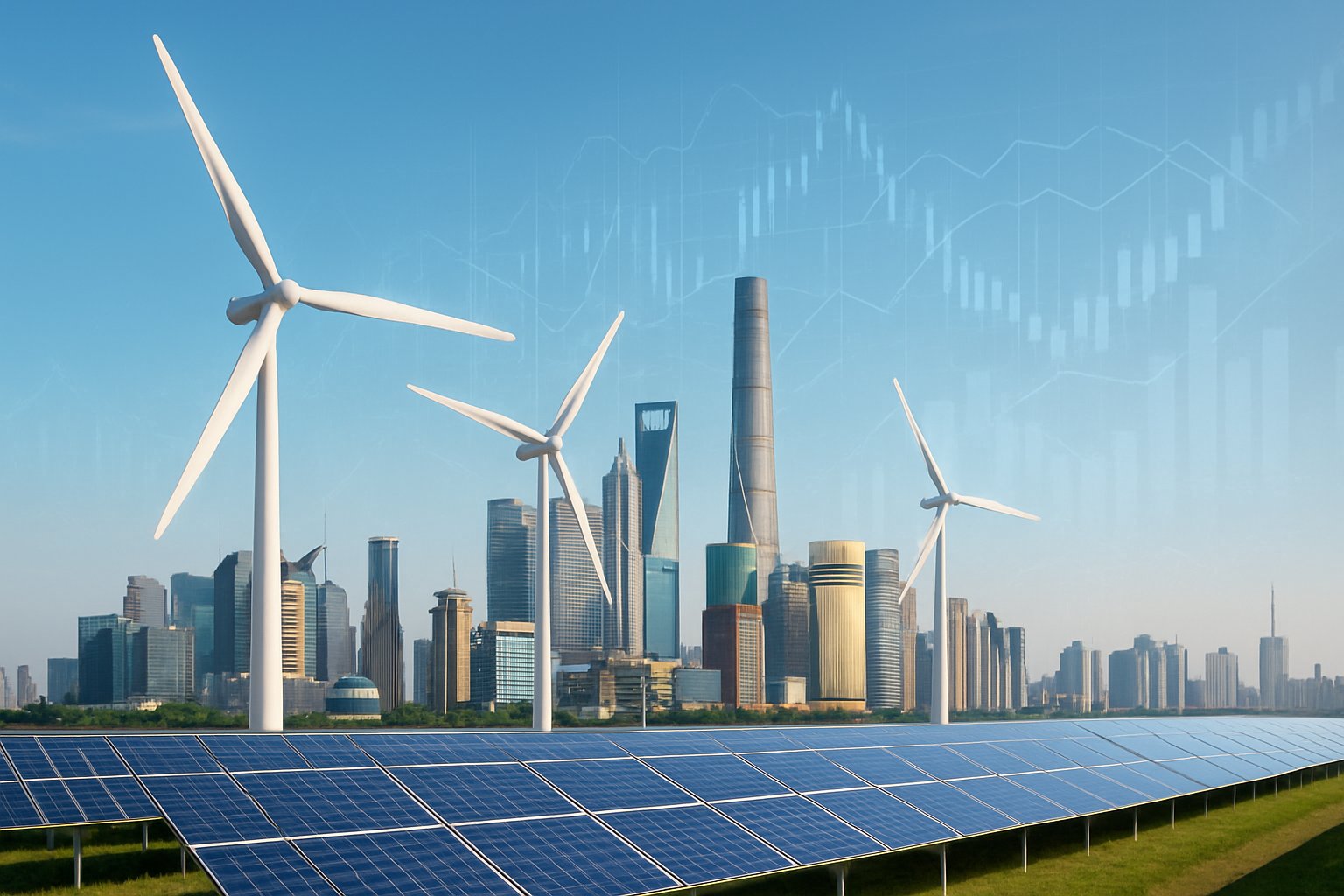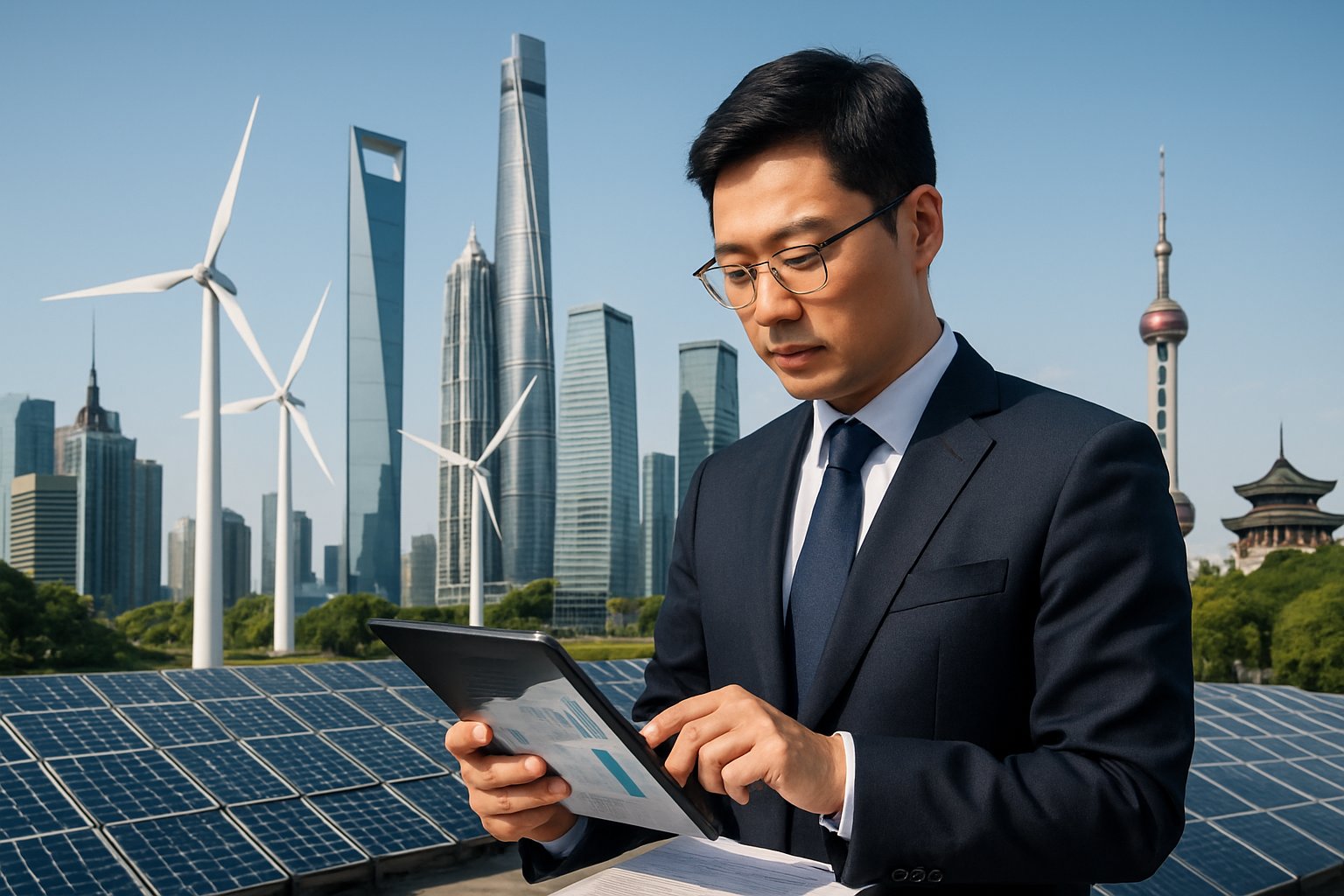China energy law is a big new rule that starts on January 1, 2025. It puts green energy first, sets limits on carbon and energy use, and makes sure coal is used cleanly. It also pushes for wind, solar, hydro, biomass, and hydrogen.
Heavy polluting industries like steel and cement must follow new renewable targets, like data centers using 80% green power in provinces such as Yunnan aiming for 70% renewables in 2025.
Curious how China plans to walk the line between fossil fuels and renewables? This law is at the center of it. It pushes everyone—public institutions included—to lean into green electricity and energy-saving products. Read on to learn more!
China Energy Law Basics

The Energy Law of the People’s Republic of China is the first sweeping legal framework for managing energy in the country. It spells out the rules for energy production, use, and security.
You’ll notice it touches everything: coal, renewables, energy trade, and those all-important carbon goals.
What Is It And Why It’s Big News (Effective Jan 1, 2025)
This law finally took effect on January 1, 2025, after nearly two decades of back-and-forth. It sets up a national system for energy planning and market management—no small feat for a country this size.
It pushes for cleaner energy like solar and wind, but still keeps coal and gas in the mix as backup. The law also supports energy security by backing a steady supply and fostering international energy trade.
It requires power grids to connect more and support local energy sources. If you live or work in China, you’ll probably feel these changes as the rules shift toward cleaner power.
Carbon & Energy Controls

China’s Energy Law sets tough limits on both carbon emissions and energy use. Instead of just capping total energy consumption, it brings in stricter rules to tackle carbon output and energy intensity together.
That’s a pretty big shift, and it helps you see how China plans to keep pollution in check while promoting clean energy.
Shift To “Dual Control” Of Carbon Emissions & Energy
The law introduces a dual control system—managing total carbon emissions and carbon intensity, plus total energy use and energy intensity. Companies and provinces now face limits on both carbon emissions and energy use.
This system replaces the old, energy-only rules. It speeds up the move toward a true carbon control system and pushes all industries to shrink their footprints.
You’ll see more focus on cutting carbon, not just saving energy. That lines up with China’s plan to peak carbon emissions by 2030 and eventually hit carbon neutrality.
Provincial Renewable Quotas + National Targets
The law sets national renewable energy targets—think more wind, solar, and hydropower in the mix. Each province gets its own renewable quota, so every region has to hit specific green energy goals.
By blending national and provincial targets, the law encourages everyone to use more green energy. Public institutions and big energy users are nudged to put renewables and energy-saving products first.
This whole system supports China’s energy transition while trying to keep the lights on and the economy running.
Renewables & Market Rules

The new energy law sets clear targets for ramping up renewables: wind, solar, hydro, hydrogen, and biomass. It brings in new regulations to support these sources and push the energy market toward cleaner, more efficient power.
Mandates For Wind, Solar, Hydro, Hydrogen, Biomass
There are serious government mandates for growing renewable energy tech. Wind, solar, and hydro get top billing, with planned growth targets for each.
The law also gives hydrogen energy and biomass a boost. Hydrogen is championed as a clean fuel, especially for industry and transport, while biomass—think agricultural and forestry waste—helps cut down on fossil fuel use.
To hit these goals, the law pushes for energy science and tech innovation. Better production methods and more reliable grid integration are on the agenda.
New Market, Green Certificates & Dispatch Reform
The energy market gets a facelift to support green investments. One standout: the green electricity certification system, which tracks and verifies renewable electricity production.
Green certificates let you prove your green electricity use or sales. The law also shakes up power dispatch rules, giving renewables better grid access and fairer treatment in the dispatch order.
That should help cut down on wasted renewable energy—no more wind or solar sitting idle just because the grid’s full. Public institutions are encouraged to use renewables and energy-saving products, which should drive up demand for clean power.
Fossil Fuel Role & Energy Security

China’s Energy Law tries to balance fossil fuel use with the need for energy security. It spells out how coal, oil, and gas should be developed and used, while keeping the power grid stable and ready for emergencies.
You’ll see a real focus on keeping supply steady as the country shifts to cleaner energy sources.
Coal, Oil, Gas Use Guided By Law
The law allows reasonable development of coal, oil, and gas to keep the energy supply reliable. Fossil fuels still play a big role, but their extraction and use now come with stricter standards for cleanliness and efficiency.
Coal acts as a backup and for peak power needs, not just steady supply. Oil and gas extraction are regulated to avoid waste and pollution.
Fossil fuels aren’t disappearing overnight, but the law pushes for cleaner tech and a slow but steady drop in harmful impacts.
Emergency Reserves & Grid Stability Support
Your energy security depends on solid reserves and a tough grid. The law requires emergency energy reserves, especially fossil fuel stocks, to handle crises like shortages or sudden demand spikes.
This helps prevent blackouts when things get tight. The law also supports using coal-fired plants for peak shaving, letting them ramp up fast when demand jumps.
It’s all about keeping the grid steady as China leans into renewables. Fast response and flexibility are key to keeping the economy and society safe from energy shocks.
Why It Matters
China’s new energy law shakes up how the country manages energy. It’s designed to boost clean energy and trim fossil fuel use.
That’s a big deal for China’s climate goals, and it changes how businesses and regions use energy.
Meets China’s Carbon Peak (2030) & Neutrality (2060) Goals
The law plays a central role in helping China hit its carbon peak by 2030 and reach neutrality by 2060. Renewables like solar, wind, and hydrogen get top priority, while fossil fuels need to get cleaner.
You’ll see tighter rules and more support for cutting emissions and improving efficiency. The law pushes for a balance: meeting energy demand with cleaner sources to lower pollution and keep up with global climate commitments.
By following these rules, you’re part of China’s plan to slow climate change and cut greenhouse gases. Your choices actually matter here.
Impact On Industry, Provinces, And Energy Markets
The law makes industries use energy more efficiently and cleanly. Companies are nudged to invest in renewables and advanced energy tech, which could shake up energy costs and supply chains.
Provinces get guidance to upgrade their energy systems—expect to see more local wind, solar, and hydro projects, depending on what resources are nearby.
Energy markets will shift, too. Less reliance on imports, more secure supply, and maybe steadier prices as China leans on its own clean resources.
You’ll run into more regulation and new incentives, all aiming to make the energy system more reliable and less damaging to the environment.
Final Thoughts
China’s new Energy Law, effective January 1, 2025, marks a major shift toward cleaner energy. It replaces the old “dual control of energy” system with a “dual control of carbon” strategy, regulating both carbon emissions and intensity.
The law mandates at least 80% renewable power in new data centers and sets province-level renewable targets (e.g., Yunnan 70%, Chongqing 10.8%).
It supports China’s goals to peak emissions by 2030 and reach net-zero by 2060, boosts investment in green tech, and reshapes the energy market. But coal remains, requiring careful balance.
Contact China Legal Experts to assess how this law affects your operations and secure compliance.
Frequently Asked Questions
Can there be no energy transition without China?
China uses more energy and emits more CO2 than any other country. If China doesn’t commit to renewables and efficiency, global efforts to cut emissions will hit a wall.
Its transition isn’t just local—it’s global.
What is the China energy storage mandate?
China’s law requires more energy storage systems to help renewables fit into the grid. It encourages battery and other storage tech to keep the power supply stable and cut reliance on fossil backups.
This helps match supply and demand and keeps the grid steady.
What is China's policy on renewable energy?
The law sets targets to grow renewables—wind, solar, and hydro are all in the spotlight. It promotes clean energy projects and pushes energy-saving products nationwide.
The government checks progress every year and enforces standards for renewable development.
What is the hydrogen energy policy in China?
China supports hydrogen as part of its green energy mix. The law encourages research, pilot projects, and industrial use—especially for transport and heavy industry.
The goal is to cut emissions and build a full hydrogen supply chain.
What is China's emissions policy?
China’s law pushes for plans to cut carbon emissions, but it also insists on keeping the energy supply steady. The country aims for carbon neutrality by 2060.
Officials say they’re tightening oversight of emissions across every sector. They want people and businesses to use more energy-saving products and technologies, hoping to drive down overall energy use.
Subscribe to receive updates
Subscribe to receive the latest blog posts to your inbox every week.






